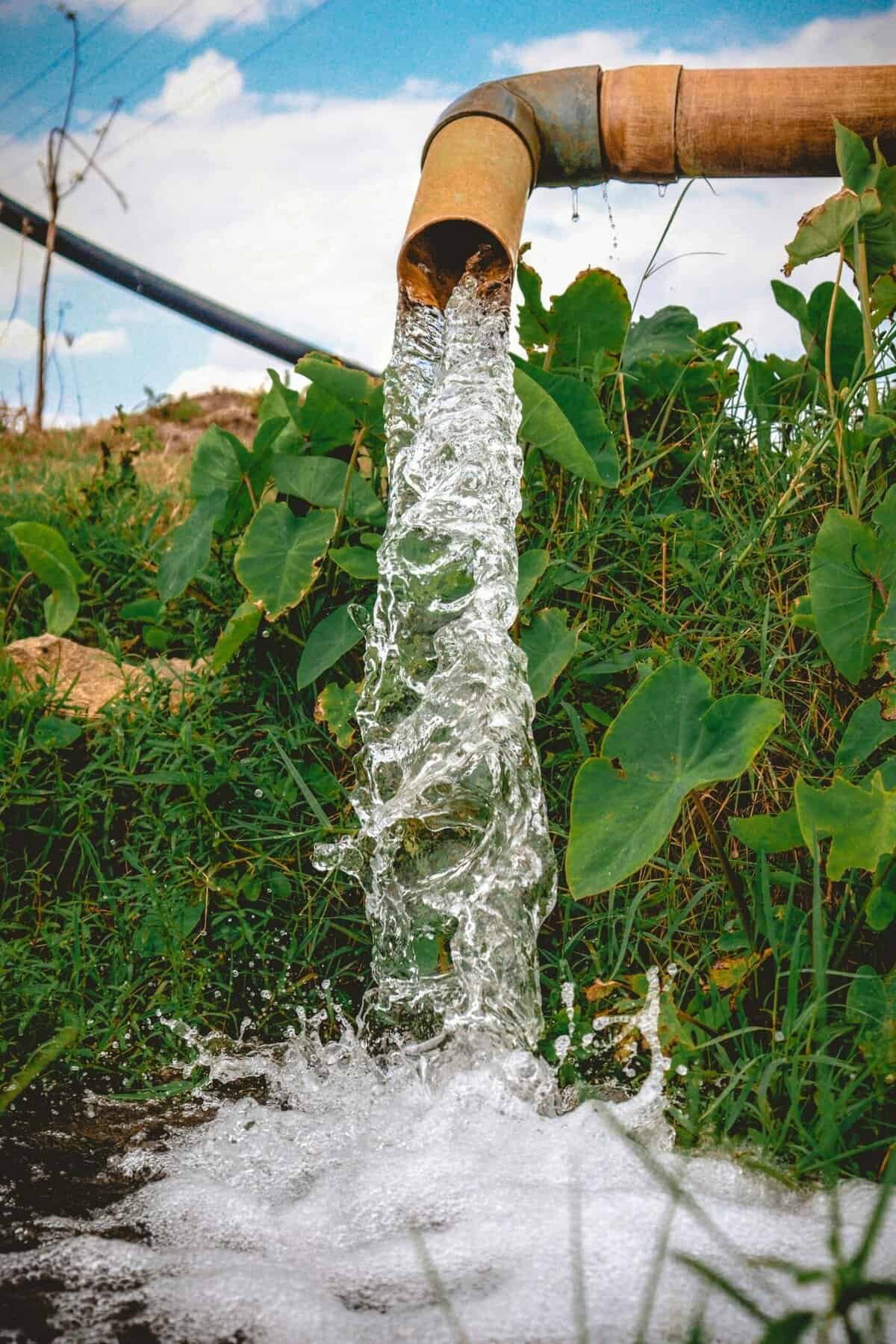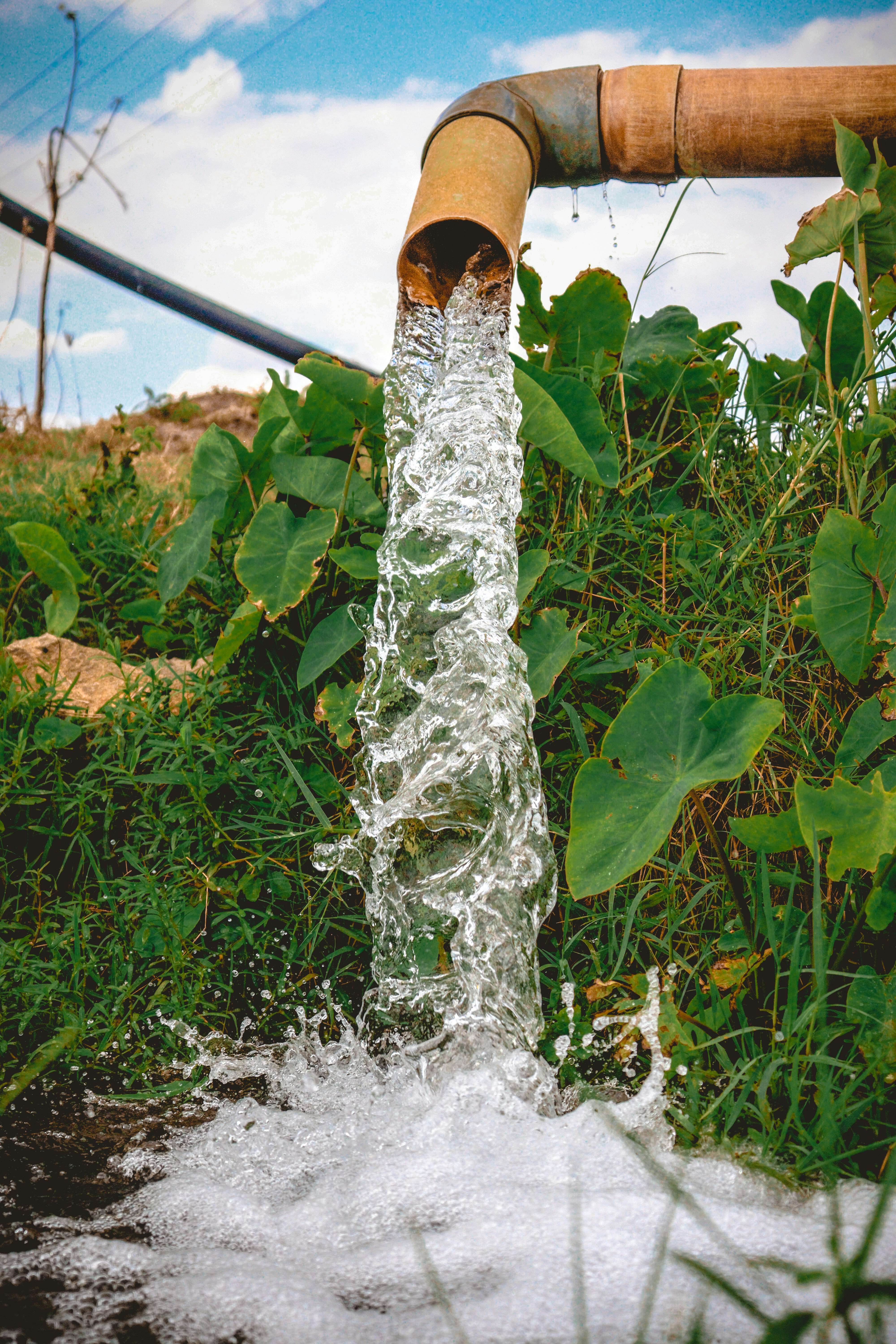Have you ever wondered what the best way is to water your nopal cactus? Watering this resilient plant is not just about pouring water on it and hoping for the best. The nopal cactus, or prickly pear, has certain requirements to thrive, and understanding its needs can transform your cultivation efforts. This article will guide you through the various irrigation systems suited for nopal cactus, highlighting the benefits and drawbacks of each method. With your newfound knowledge, your nopal plants will not only survive but flourish under optimal conditions.
Understanding Nopal Cactus Needs
Before jumping into irrigation systems, you need to understand what makes these plants unique. The nopal cactus (Opuntia spp.) is well adapted to arid environments and can survive on minimal water. Although drought-resistant, these plants still enjoy a periodic drink and can benefit from thoughtful watering strategies. The key is not just to water but to water wisely.
Climate Considerations
The nopal cactus is native to desert climates, which means it is used to lots of sunlight and very little rainfall. However, when cultivated in different environments, it may need additional watering. Be sure to account for the climate of your region when deciding on an irrigation system.
Soil Type
Nopal cactus prefers well-draining soil to prevent root rot. If your soil retains too much moisture, it can become problematic for your plant. Using a suitable soil mix, rich in sand and grit, ensures adequate drainage. In conjunction with the right irrigation system, healthy soil provides a robust foundation for your cactus to thrive.
Different Irrigation Systems
When it comes to watering nopal cactus, several irrigation methods can be effective. Let’s break down the options available, focusing on how each method can suit your plant’s needs.
Drip Irrigation
Drip irrigation is one of the most efficient systems, allowing you to water your nopal cactus precisely where it’s needed—at the roots. This method minimizes evaporation and waste, providing a slow, steady supply of water.
Benefits of Drip Irrigation
- Water Efficiency: Because water is delivered directly to the soil, there’s minimal waste through evaporation or runoff.
- Ease of Automation: Drip systems can be automated with timers, taking the guesswork out of when to water.
- Reduced Weed Growth: Only target plants receive moisture, which reduces the amount of water available to weeds.
Drawbacks of Drip Irrigation
- Initial Setup Costs: The system can be costly to install, though it may pay off in water savings over time.
- Clogging Issues: Over time, emitters can become clogged, requiring maintenance to ensure effective operation.
Soaker Hose
A soaker hose functions similarly to drip irrigation by slowly releasing water along its length. It lays directly on the soil, making it a low-maintenance option for delivering consistent hydration.
Benefits of Soaker Hose
- Simplicity: Easy to install and adjust, a soaker hose can be a do-it-yourself-friendly option.
- Uniform Water Distribution: Provides even watering across its length, ideal for garden beds with multiple cacti.
Drawbacks of Soaker Hose
- Water Pressure Dependent: This system relies on consistent water pressure to work effectively.
- Potential to Oversaturate: If not closely monitored, prolonged use can lead to excessive soil moisture.
Overhead Sprinklers
Overhead sprinklers, typically used for larger areas, spray water above the plants, mimicking rainfall. This can be beneficial in large-scale operations or mixed gardens.
Benefits of Overhead Sprinklers
- Broad Coverage: Capable of watering large areas with minimal effort.
- Easy Installation: Often easier and cheaper to set up than localized systems.
Drawbacks of Overhead Sprinklers
- Water Waste: Significant evaporation, especially in hot climates, can lead to water waste.
- Potential Disease Development: Wet leaves and stems might invite fungal issues or diseases.
Manual Watering
For the purists, nothing beats watering by hand. This involves using a watering can or hose to quench the thirst of your cacti personally.
Benefits of Manual Watering
- Control: Offers precise control over the amount of water each plant receives.
- Cost-Effective: No installation or equipment needed beyond a basic watering tool.
Drawbacks of Manual Watering
- Time-Consuming: Requires effort and time, not ideal for large collections.
- Inconsistent: Human error can lead to uneven watering, impacting plant health.
Choosing the Right Irrigation System for You
Selecting the best irrigation system should consider your specific needs, garden size, and local climate conditions. Here’s a helpful guide to assist you in making a choice:
| Criteria | Drip Irrigation | Soaker Hose | Overhead Sprinklers | Manual Watering |
|---|---|---|---|---|
| Cost | High | Moderate | Low to Moderate | Low |
| Water Efficiency | High | High | Low | Moderate |
| Maintenance Needs | Moderate | Low to Moderate | Low | None |
| Ease of Use | High (once set) | High | High | Moderate |
| Scalability | High | High | Moderate | Low |
Installation and Maintenance Tips
Once you’ve decided on an irrigation system, proper installation and upkeep are crucial to ensure long-term success.
Drip Irrigation
- Installation: Plan your layout to ensure coverage for all plant roots. Use a combination of emitters, tubing, and connectors according to your layout.
- Maintenance: Periodically check for clogged emitters and clean filters. Inspect tubing for leaks or breaks.
Soaker Hose
- Installation: Lay hoses carefully to avoid bends and kinks. Position them according to your garden layout to achieve even distribution.
- Maintenance: Flush hoses until clean water runs through to prevent clogs.
Overhead Sprinklers
- Installation: Consider wind patterns and obstacles that might affect water reach. Adjust nozzles for optimal coverage.
- Maintenance: Regularly clean nozzles and check for leaks in the connecting hoses or pipes.
Manual Watering
- Technique: Water early in the day to minimize evaporation. Direct the water at the base of the cactus to target the roots.
- Consistency: Develop a routine schedule that takes climate and soil moisture into account.
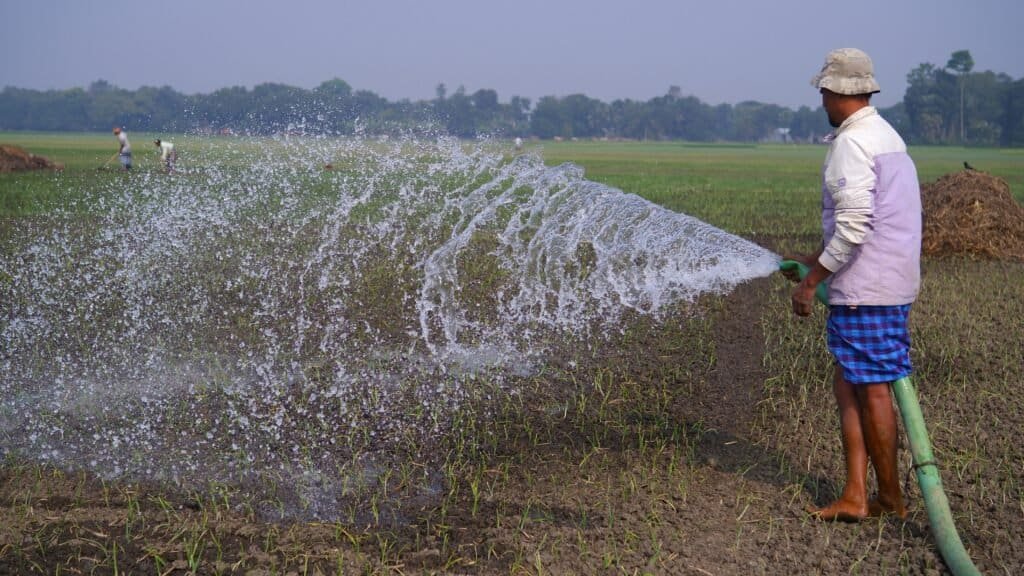
Potential Issues and Solutions
Every irrigation system might encounter challenges. Here are some common problems and their solutions:
Overwatering
With cacti, less is often more. Even with an efficient system, overwatering can occur. Symptoms include yellowing leaves and root rot.
Solution:
- Reduce Watering Frequency: Cut back on how often you irrigate.
- Enhance Drainage: Amend the soil with more sand or grit to improve drainage.
Clogged Emitters (Drip Irrigation)
Mineral buildup or debris can block emitters, reducing efficiency.
Solution:
- Regular Flushing: Routinely flush systems with clean water.
- Filter Installation: Use filters to trap particles before they reach emitters.
Uneven Water Distribution
Whether from a soaker hose or sprinklers, uneven watering can result in dry patches or puddles.
Solution:
- Assess and Adjust Layout: Re-position hoses or sprinklers to achieve more balance.
- Test Water Pressure: Ensure consistent pressure throughout your system.
The Importance of Timing
Timing is crucial when it comes to watering nopal cactus. Unlike most plants, cacti prefer less frequent watering. Understanding when to water can maximize plant health and water use efficiency.
Ideal Watering Schedule
- Growing Season: During active growth, typically in spring and early summer, you might need to water every two to three weeks, depending on weather conditions.
- Dormant Season: In late fall and winter, cut back significantly. Dormant nopal cacti can often go without water, especially in naturally humid climates.
Time of Day
Watering early in the morning or later in the evening minimizes evaporation. This ensures that more water reaches the roots rather than evaporating in the midday sun.
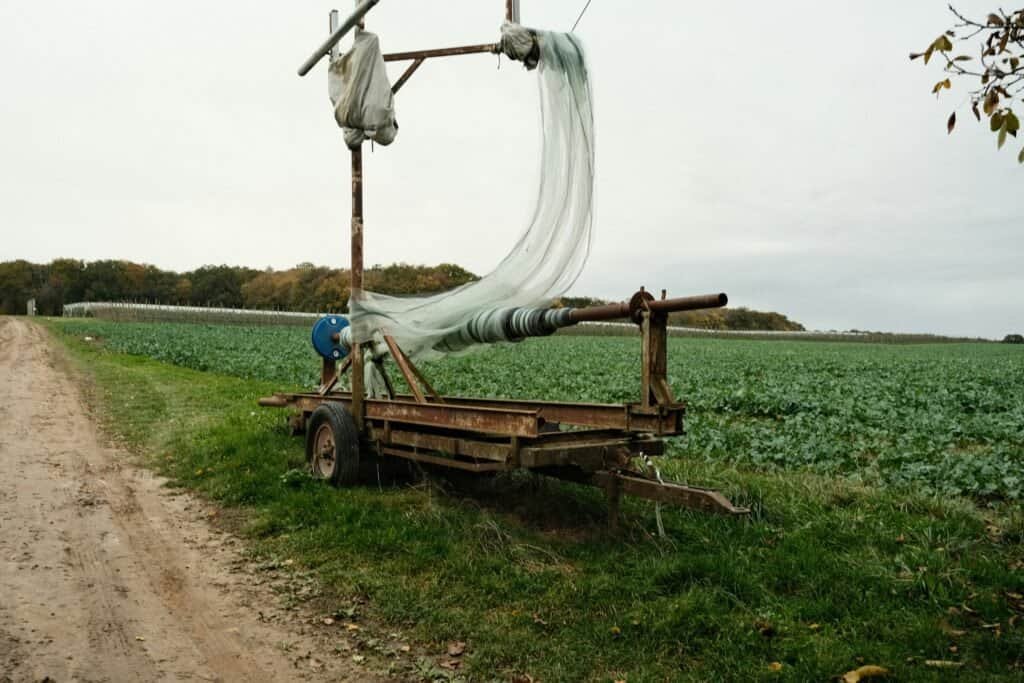
Monitoring Plant Health
Regularly check the nopal cacti for signs of distress. With appropriate irrigation, your cactus should exhibit healthy green pads, with firm, turgid texture. Signs of under-watering include shriveled or limp pads, while over-watering often results in mushy stems and potential bacterial or fungal growth. Adapt your irrigation practices to address any of these cues from your plants.
Sustainability and Water Conservation
Incorporating sustainable practices ensures that your irrigation is not only effective but environmentally friendly.
Use of Rainwater Harvesting
Consider integrating a rainwater collection system. Capturing rainwater can provide a free and sustainable water supply, especially for drip and soaker systems.
Xeriscaping and Mulching
Combine your irrigation system with xeriscaping principles, choosing native plants and designing landscapes that require minimal water. Use organic mulch around your cacti to retain moisture and suppress weeds without over-watering.
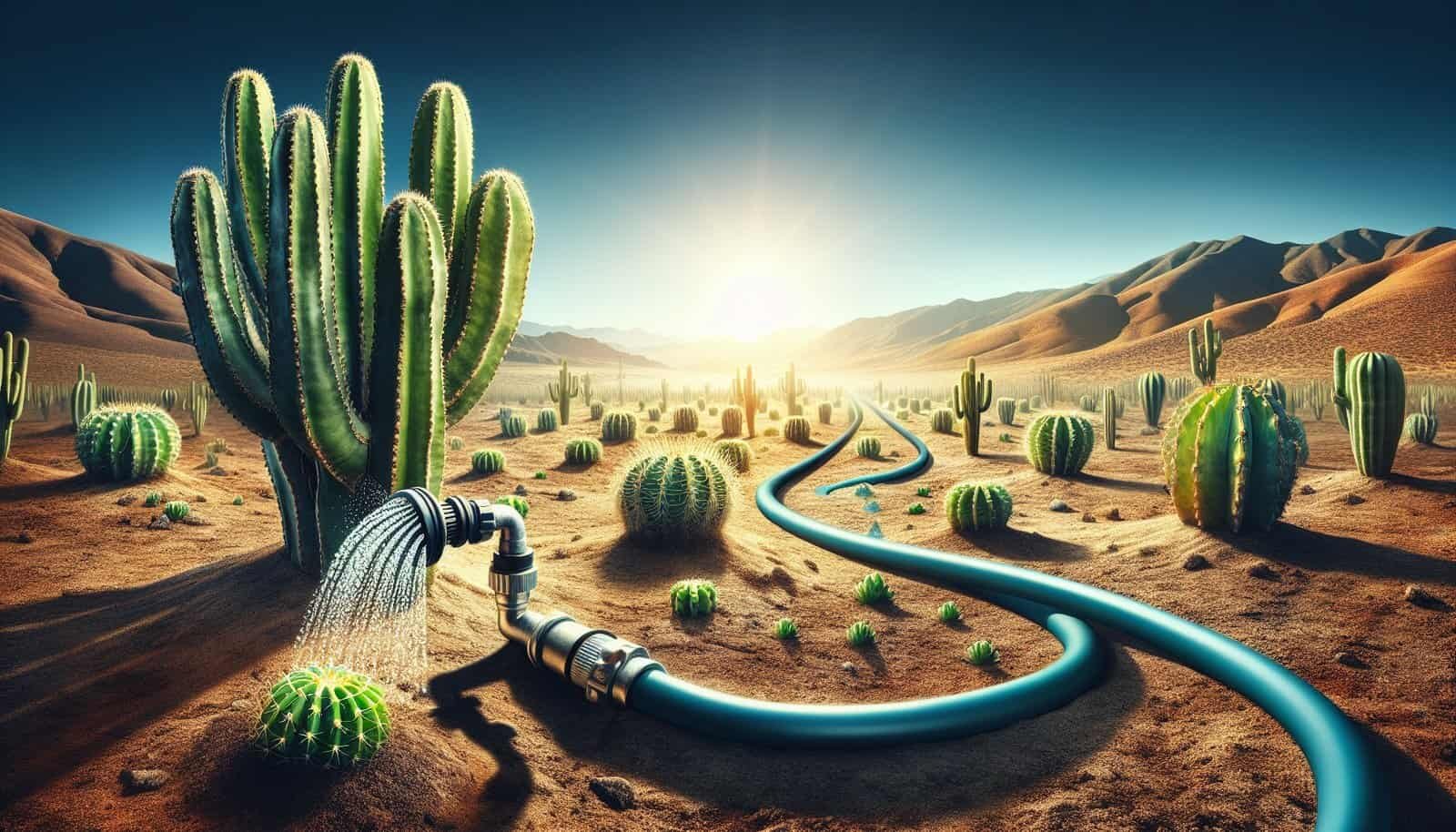
The Final Word on Irrigating Nopal Cactus
Picking the best irrigation system for your nopal cactus depends on various factors including climate, garden layout, and your available resources. Armed with knowledge of the pros and cons of each irrigation method, you can make an informed decision that caters to both your personal gardening style and your cactus’s needs. Remember, the ultimate goal is a thriving cactus garden that requires minimal intervention while conserving water and promoting sustainable practices. As you refine your process, your nopal cacti will thank you with healthy growth and vitality.

